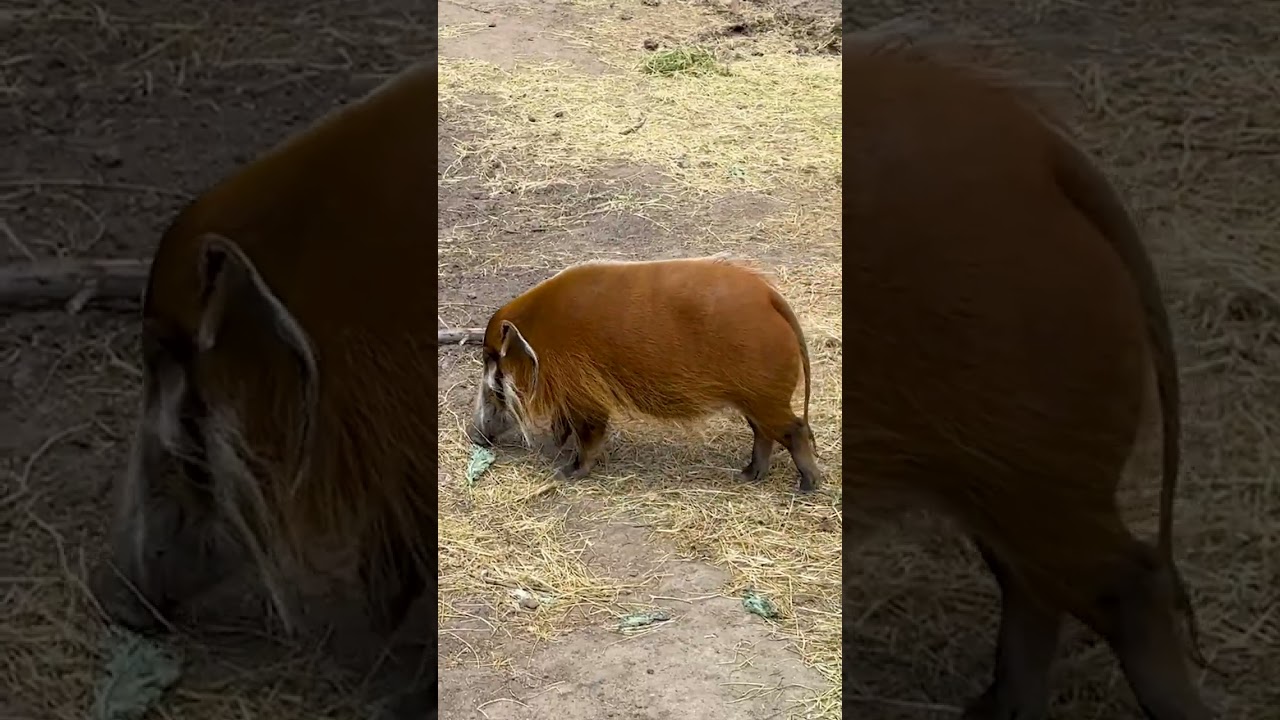– Understanding the Red River hog and their vocal communications
– The role of sound in Red River hog behavior and socialization
– Challenges in Red River hog conservation
– Zoo management strategies for Red River hog well-being
– The significance of promoting wildlife conservation through educational videos
Red River hogs are striking creatures with vivid auburn, brown and black markings and prominent tufted ears. Native to the forests and savannas of West and Central Africa, these social and nocturnal animals are known for their distinctive vocalizations. Observing these sounds in a naturalistic setting, such as a zoo habitat designed to mimic their natural environment, can be a delightful experience for casual visitors and animal behavior enthusiasts.
One of the most captivating aspects of Red River hog behavior is their rich repertoire of vocal communications. These sounds include grunts, barks, and squeals, which vary in pitch, length, and tone. Each vocalization has a purpose, from facilitating group cohesion as they navigate their terrain to alarms signaling potential threats. Discovering what triggers these happy squeaks could offer deeper insights into their social structures, relationships, and environmental needs.
Zoos with Red River hogs have a unique opportunity to provide a home for these animals and gather valuable behavioral data. Creating environments that stimulate natural behaviors is essential for the hogs’ welfare. Zoos engage in practices such as offering a varied diet, providing enrichment activities, and designing habitats to encourage foraging and exploration.
However, beyond the happiness of individual animals, conservationists express a growing concern for the Red River hog’s future. Deforestation, hunting, and habitat fragmentation pose significant threats to their survival. In the wild, the population is declining, and habitat protection and other conservation measures have become increasingly critical for their preservation.
Zoos contribute to conservation by educating the public on the complex lives of animals like the Red River hog. Educational videos showcasing their behaviors, particularly communication, help foster a connection with the audience. These videos can inspire viewers to support conservation efforts and spread awareness. Cranking up the volume for those happy squeaks isn’t just entertaining—it’s an invitation to learn about and help protect these vibrant creatures.
When discussing wildlife conservation through educational videos, it is crucial to captivate the audience with genuine and observable moments. Capturing the pure joy of a Red River hog engaging in natural behaviors can draw attention to their plight in the wild. This method of engagement is highly effective in encouraging positive attitudes towards wildlife and their environment, creating allies in the mission to conserve and protect species at risk.
In zoo management, understanding the specific needs of Red River hogs enhances their quality of life. This involves meticulously designed habitats providing mental stimulation and physical exercise opportunities. Innovative strategies such as varying the terrain and introducing natural elements like water bodies can reflect the hog’s original habitat and encourage innate behavior. Plus, it creates more engaging visual content, allowing visitors to see these animals interacting with features that elicit their curious nature and sociability.
Caring for Red River hogs also requires a balanced approach to their health and dietary needs. These omnivores require a mix of plant and animal foods, and feeding routines can be adjusted to mirror the challenges they would face in the wild, maintaining their natural foraging instincts. This aspect of zoo management ensures the hogs remain active and healthy and serves as an educational tool for illustrating the animal’s adaptations and survival skills.
As an educational resource, articles like this help illuminate the life of Red River hogs, the importance of their vocalizations, and the conservation challenges they face. The joy observed in a simple video of Red River hogs engaging with each other through vocalizations transmits a larger message about the significance of preserving biodiversity. Each grunt and squeal that reaches the ears of zoo visitors or video viewers is a reminder of the intrinsic value these creatures have and the role we all play in their ongoing story.
The path toward effective wildlife conservation requires a blend of direct action, habitat protection, advocacy, education, and scientific research, all of which zoos and videos can facilitate. The sights and sounds of a thriving Red River hog population in captivity can thus serve as a symbol of hope, a reflection of commitment to environmental stewardship, and a rallying cry for those dedicated to ensuring the chorus of happy squeaks continues both in zoos and in the wild for generations to come.
*****
Source Description
Happy #StarWarsDay! May the 4th be with you. Some of our animal residents make celebrating May the 4th extra special, like eight-year-old Red River hog sisters, Rey and Finn! Visit them in African Rift Valley, or if you’re in a galaxy far, far away, drop a ⭐️ to spread the love! #StarWarsDay #MayTheFourth


